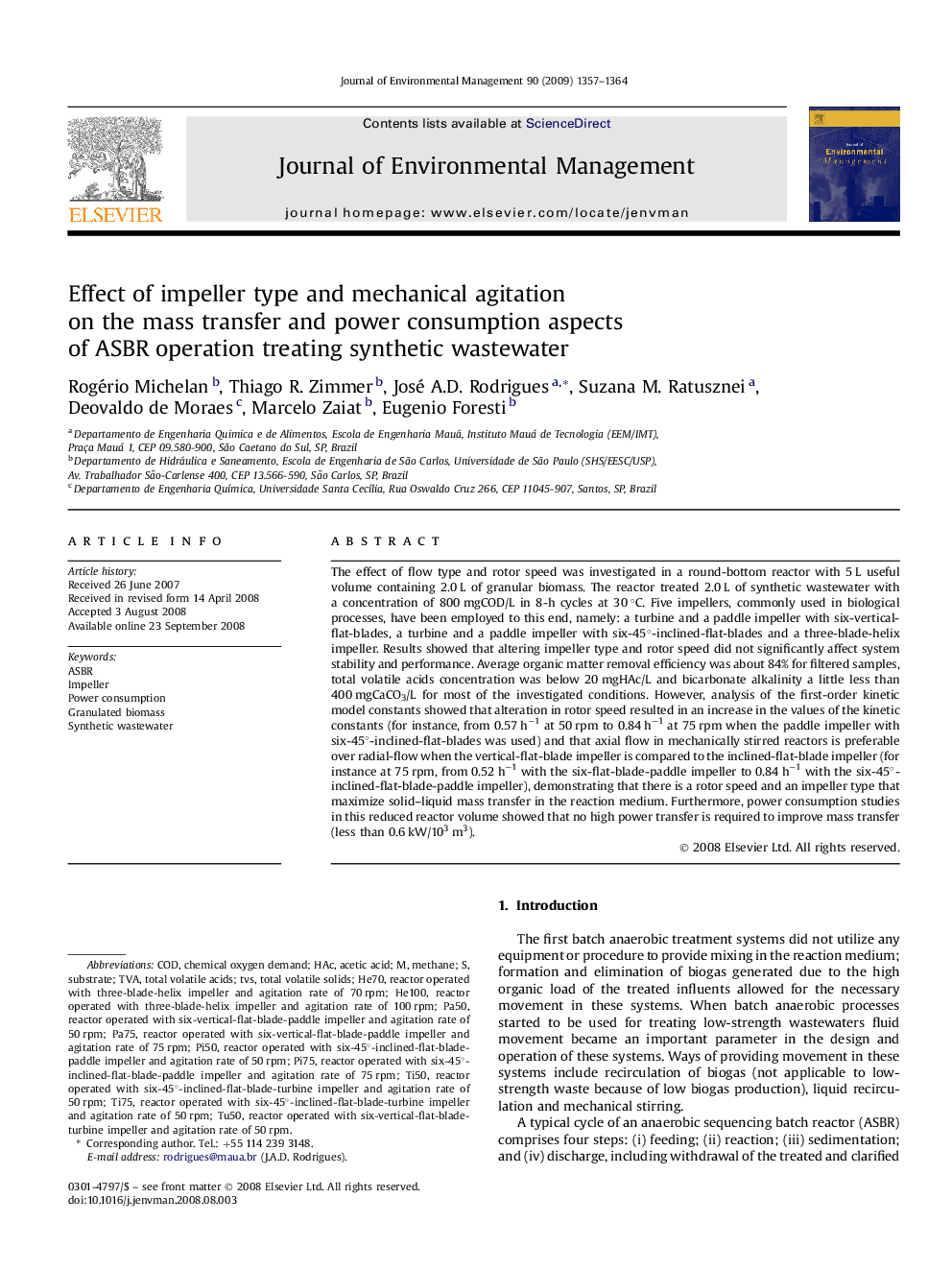| Article ID | Journal | Published Year | Pages | File Type |
|---|---|---|---|---|
| 1057951 | Journal of Environmental Management | 2009 | 8 Pages |
The effect of flow type and rotor speed was investigated in a round-bottom reactor with 5 L useful volume containing 2.0 L of granular biomass. The reactor treated 2.0 L of synthetic wastewater with a concentration of 800 mgCOD/L in 8-h cycles at 30 °C. Five impellers, commonly used in biological processes, have been employed to this end, namely: a turbine and a paddle impeller with six-vertical-flat-blades, a turbine and a paddle impeller with six-45°-inclined-flat-blades and a three-blade-helix impeller. Results showed that altering impeller type and rotor speed did not significantly affect system stability and performance. Average organic matter removal efficiency was about 84% for filtered samples, total volatile acids concentration was below 20 mgHAc/L and bicarbonate alkalinity a little less than 400 mgCaCO3/L for most of the investigated conditions. However, analysis of the first-order kinetic model constants showed that alteration in rotor speed resulted in an increase in the values of the kinetic constants (for instance, from 0.57 h−1 at 50 rpm to 0.84 h−1 at 75 rpm when the paddle impeller with six-45°-inclined-flat-blades was used) and that axial flow in mechanically stirred reactors is preferable over radial-flow when the vertical-flat-blade impeller is compared to the inclined-flat-blade impeller (for instance at 75 rpm, from 0.52 h−1 with the six-flat-blade-paddle impeller to 0.84 h−1 with the six-45°-inclined-flat-blade-paddle impeller), demonstrating that there is a rotor speed and an impeller type that maximize solid–liquid mass transfer in the reaction medium. Furthermore, power consumption studies in this reduced reactor volume showed that no high power transfer is required to improve mass transfer (less than 0.6 kW/103 m3).
